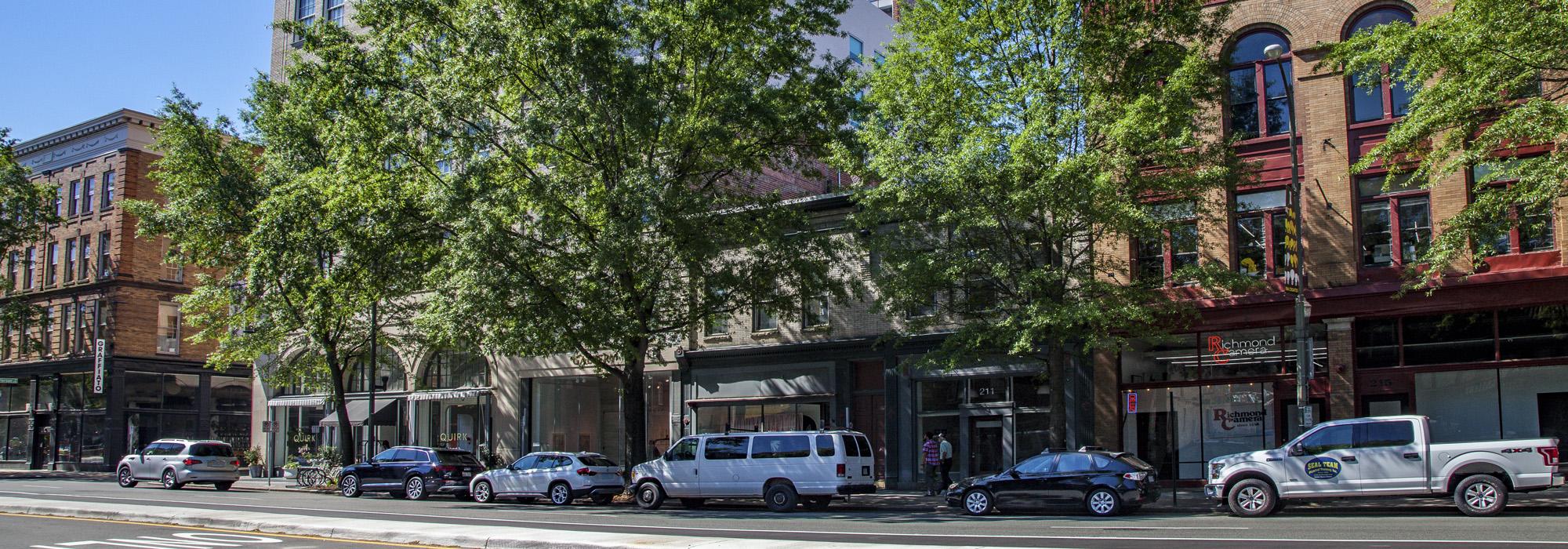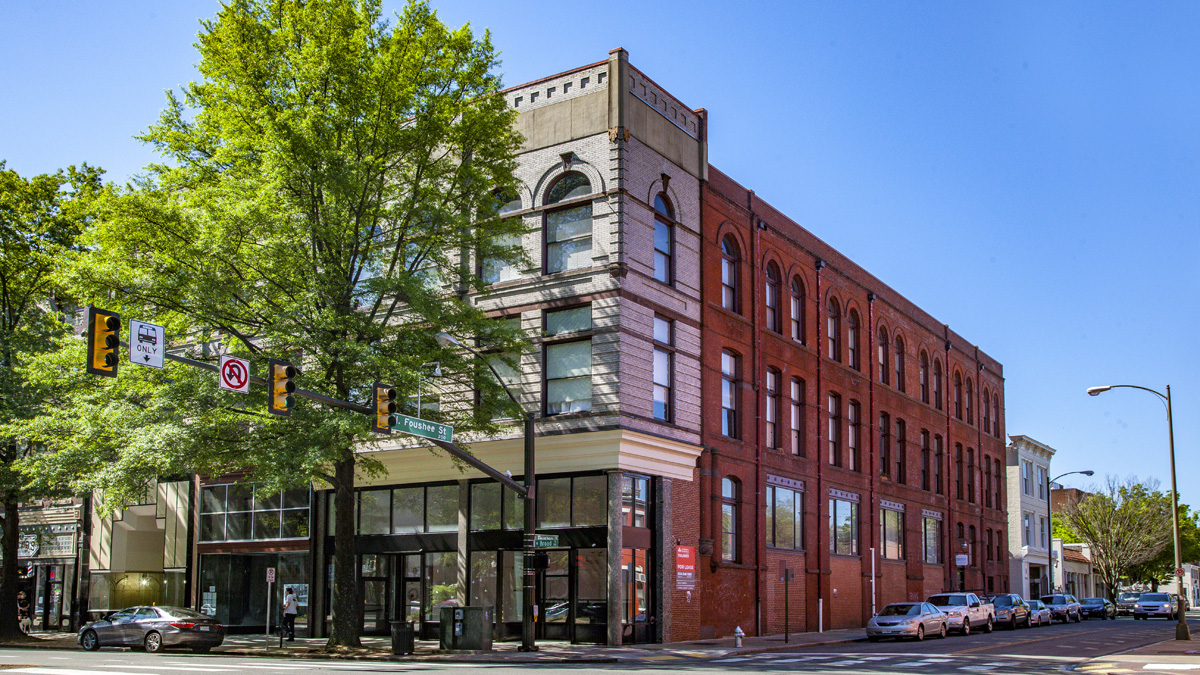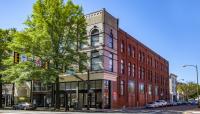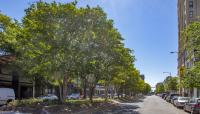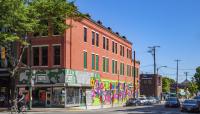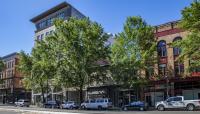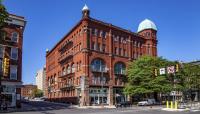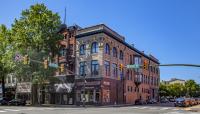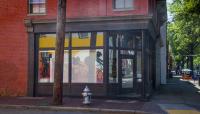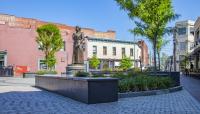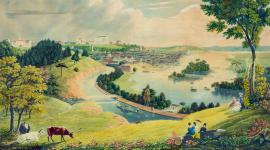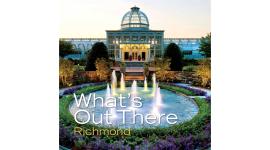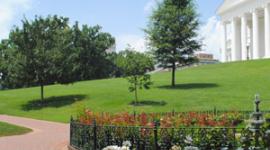Landscape Information
Originally established as the northern boundary of Colonel William Mayo’s plan for Richmond (circa 1744), the central thoroughfare of this historic district was extended and labeled “H Street” by Thomas Jefferson in the 1780s when he drew plans to update the original city grid. Initially the same width as the surrounding streets, H Street was expanded to a 115-foot-wide boulevard in 1793 in an unsuccessful attempt to establish a market at its center. Officially adopting the name Broad Street in 1845, by 1889 the boulevard accommodated a prominent streetcar line, reinforcing its role as a major transportation artery. Broad Street also acted as a dividing line between Monroe Ward, an elite White residential neighborhood during the nineteenth century, and Jackson Ward, which became a thriving African American neighborhood after the Civil War.
Leading to downtown Richmond, three lanes of traffic run on either side of a wide center median formally lined with mature, evenly spaced trees. The boulevard is flanked by low-rise late-nineteenth- and early-twentieth-century brick commercial buildings. Most are Italianate, but some are Romanesque Revival, Classical Revival, or Mission/Spanish Colonial Revival buildings. Notable structures include the Masonic Temple (listed in the National Register of Historic Places in 1983), the Central National Bank headquarters (listed in the National Register of Historic Places in 1979), and the Empire Theater. While the commercial area declined during the era of suburbanization in the late twentieth century, Broad Street has experienced a resurgence in the 21st century, with several buildings converted to residential apartments and new businesses. In 2017 a plaza featuring a bronze statue of Maggie L. Walker was unveiled on the corner of Broad and Adams Streets. The Broad Street Commercial Historic District was listed in the National Register of Historic Places in 1987 and was expanded in 2004 and 2007.



